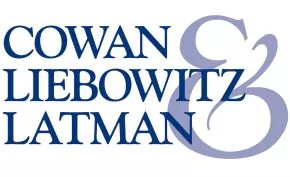In October 2023, the World Wide Web Consortium (W3C)--an international organization that recommends and maintains web-related protocols, guidelines, and standards--adopted the Web Content Accessibility Guidelines (WCAG) 2.2, by elevating them to "Recommended" status. Web developers, individuals with accessibility issues, and U.S. courts all look to the WCAG Guidelines as industry standards for web accessibility.
Updates to the Guidelines should be of particular importance to website owners. Non-compliance with the Guidelines often serves as the backbone of plaintiffs' complaints against website owners for alleged violations of the Americans with Disabilities Act of 1990 (ADA).
We have previously written about the thousands of claims filed by plaintiffs against website owners for alleged failures to comply with the ADA, and several defenses (here and here) that have succeeded and/or may succeed against an ADA non-compliance lawsuit.
The Guidelines are divided into testable "success criteria," consisting of three levels: A (minimum level of conformance), AA, and AAA (highest level of conformance). AA is generally the most followed level of conformance. Indeed, "[i]t appears to be the consensus that the AA Level should be used by companies when bringing websites into compliance." Andrews v. Blick Art Materials, LLC, 286 F. Supp. 3d 365, 382 (E.D.N.Y. 2017).
Each update to the Guidelines is constructed to build upon the last, such that a website owner who is in compliance with the latest Guidelines will also be in conformity with earlier versions. WCAG 2.2 is similar to WCAG 2.1, but it does contain some notable differences. The specific changes are highly technical, and they exceed the scope of this brief article. However, generally speaking, the updates address:
- Visibility of user interface components -- the extent that an object can be obscured when selected
- Dragging movements for objects and minimum size of targets (for pointer inputs)
- Predictability in website operation and appearance (for example, putting a help button in the same place on each webpage)
- Redundant entry and accessible authentication
In addition, the updates include the removal of a success criterion regarding HTML parsing guidelines (i.e., the process of separating HTML code into constituent parts, to permit manipulation or translation into a format other applications could process), due to browser and assistive technology upgrades that render the parsing success criterion obsolete.
Website owners and operators should consult with their web developers to ensure full compliance with WCAG 2.2. By reviewing your website for conformity with the Guidelines, you will likely improve the accessibility of your website, and potentially reduce vulnerability to ADA website claims.
The content of this article is intended to provide a general guide to the subject matter. Specialist advice should be sought about your specific circumstances.

